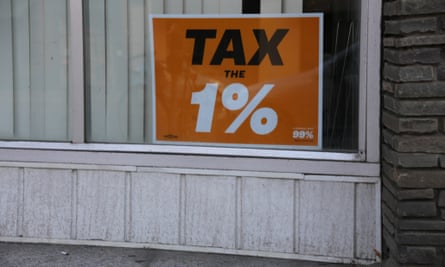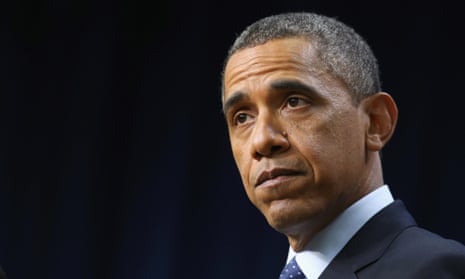It may sound like a dream to live in the seven US states that have no income taxes: every dollar that doesn’t go to the tax man stays in your bank account, right?
Not quite. Taxes reinforce inequality, as it turns out. States with no income tax end up taxing the poor far more heavily than other classes.
Poor Americans pay more in state taxes than other income classes
The average state tax burden for the bottom 20% of the population is 11.1% – and the top 1% of earners shoulders a tax burden of only 5.6%. People with lower income levels actually pay the majority of state taxes, according to the Who Pays report from the Institute on Taxation and Economic Policy, or ITEP.

Americans are not OK with that, according to a new survey. It turns out that Americans don’t approve of either high taxes or low taxes; they want fair taxes. Despite the years of grousing about the complexity of the tax code and the impossibility of tax reform, Americans appear to be more aligned in their thinking than many lawmakers would admit.
In a survey by Wallethub of 1,050 people, the company asked respondents to list what they thought were fair tax rates for incomes ranging from $5,000 to $250,000 annually.
The company then calculated the absolute difference between the perceived fair tax burden and real state tax burden for all income levels to assign rankings. The states that levy too much or too little tax end up with lower rankings.
You’d think taxpayers cannot be entirely objective about the tax they pay, but the average American is highly invested in fairness. According to the survey results, Americans strongly endorse progressive taxation and they share a Goldilocks approach to taxes: too high is bad, and too low is uncomfortable.
Consider: all seven states with no income tax landed in the bottom of Wallethub’s list for fairness. Topping the list for fair taxes instead was Montana, with a reasonably high maximum state income tax of 6.9%.
This seems to go against the conventional wisdom. So what’s fair?
ITEP’s guide to fair state and local taxes says that a fair tax system asks citizens to contribute to the cost of government services based on their “ability to pay”.
There are dissenters. A federal-tax-abolishing movement supports the Fair Tax proposal to abolish federal income taxes entirely. They favor a purely consumptive tax system – levying fees on things we consume, like a universal high sales tax on groceries and retail items, or sin taxes on alcohol or tobacco.
“Tax fairness can mean different things,” says Tracy Gordon, a senior economics fellow at the Tax Policy Center at Urban Institute. She explains that even though fairness is just one criterion for evaluating a tax system it is often on top of people’s minds; over criteria such as efficiency, economic competitiveness or ease of administration.
“Sometimes these criteria may run against each other,” says Gordon. She points at Margaret Thatcher’s controversial poll tax proposal from the 1980’s – a flat local tax on all individuals regardless of income. This was highly efficient, and hard to escape. On the other hand, it was considered patently unfair to tax everyone the same amount regardless of income levels. That is a sentiment that state taxes could dwell on for a start.
Odysseas Papadimitriou, CEO of Evolution Finance, which published the Most and Least Fair State Taxes report, says the bottom line is that all state taxes are by definition “unfair” because the poor are effectively taxed more than the wealthy.
He says that they expected conservatives and the liberals to disagree on tax structure but surprisingly, both groups agreed that the rich should be taxed more than the poor. “They disagreed on the magnitude but they agree that there should be an upward slope,” he says. Taxpayers are concerned about paying fair taxes more than just high taxes. “You can tax them little but if it is unfair, they wouldn’t like that.”

Zero income tax doesn’t mean zero state tax
It’s impossible to talk about taxes without talking about income inequality. Standard and Poor’s latest income inequality report warns that growing American income disparities will adversely affect state tax revenue for all states – whether they rely heavily on income or sales taxes.
But the report admits that the negative effect was stronger in sales tax-reliant states than it was for the income tax-dependent states. The researchers suggest states adopt a more progressive tax structure.
State taxes primarily fund public services like education and healthcare and are collected as a combination of income, property and sales taxes. States that eliminate income tax are not being altruistic: they’re just raising taxes in other ways, primarily through sales taxes. When Texas charges no income tax, it can choose to make its money from a different source, hiking sales taxes past 8% or higher. Nearly 70% of Alaska’s income is from non-tax revenue, like revenues from oil companies.
Tennessee for instance, while not taxing wages, charges 9.46% average combined state and local sales tax rate – the highest in the country.
A tax system with zero income tax and high sales tax may seem like the picture of equality, in that everybody pays nearly 10 cents of every dollar spent to the government.
Instead, it’s punishing to the poor. Taxing a tenth of every dollar paid at the corner store isn’t much when there’s millions in the bank, but it’s quite a lot for someone earning minimum wage.
So what’s fair in the eyes of Americans? High property and income taxes, because they shift the burden to higher earners and property owners. Montana and Oregon, which topped the rankings for fairness, have larger emphasis on property and income taxes, resulting in proportionally higher taxes for the wealthy – the progressive tax structure that Americans like most.

Comments (…)
Sign in or create your Guardian account to join the discussion